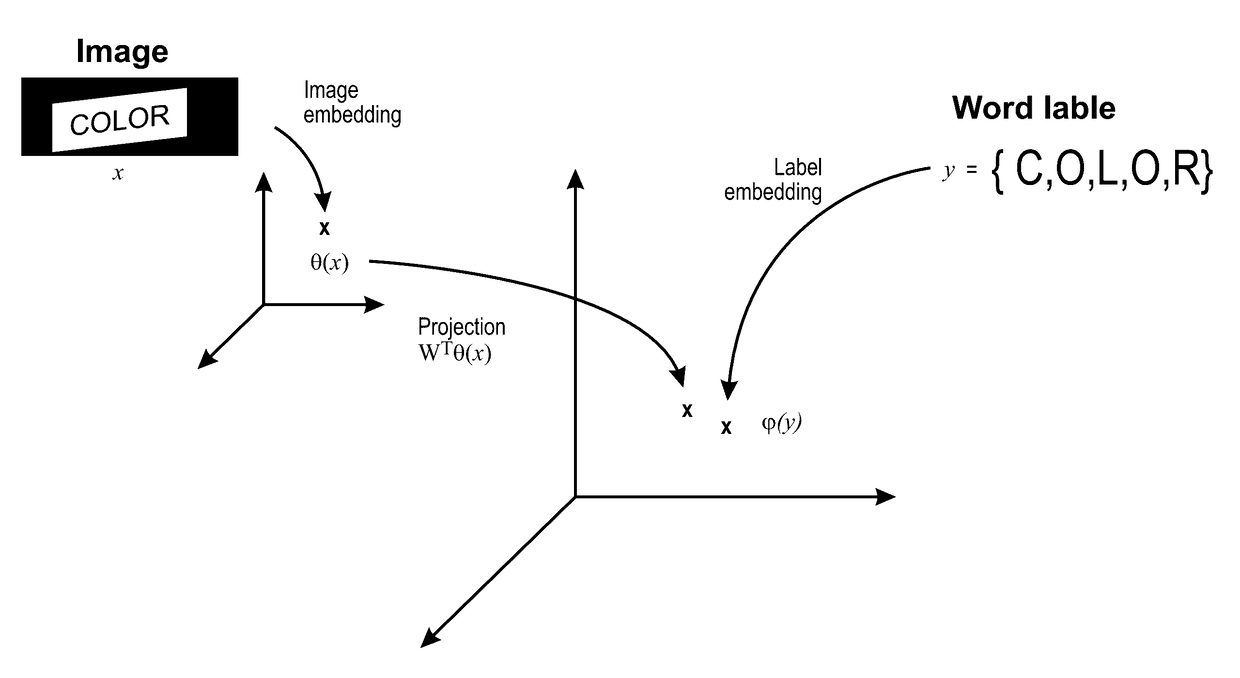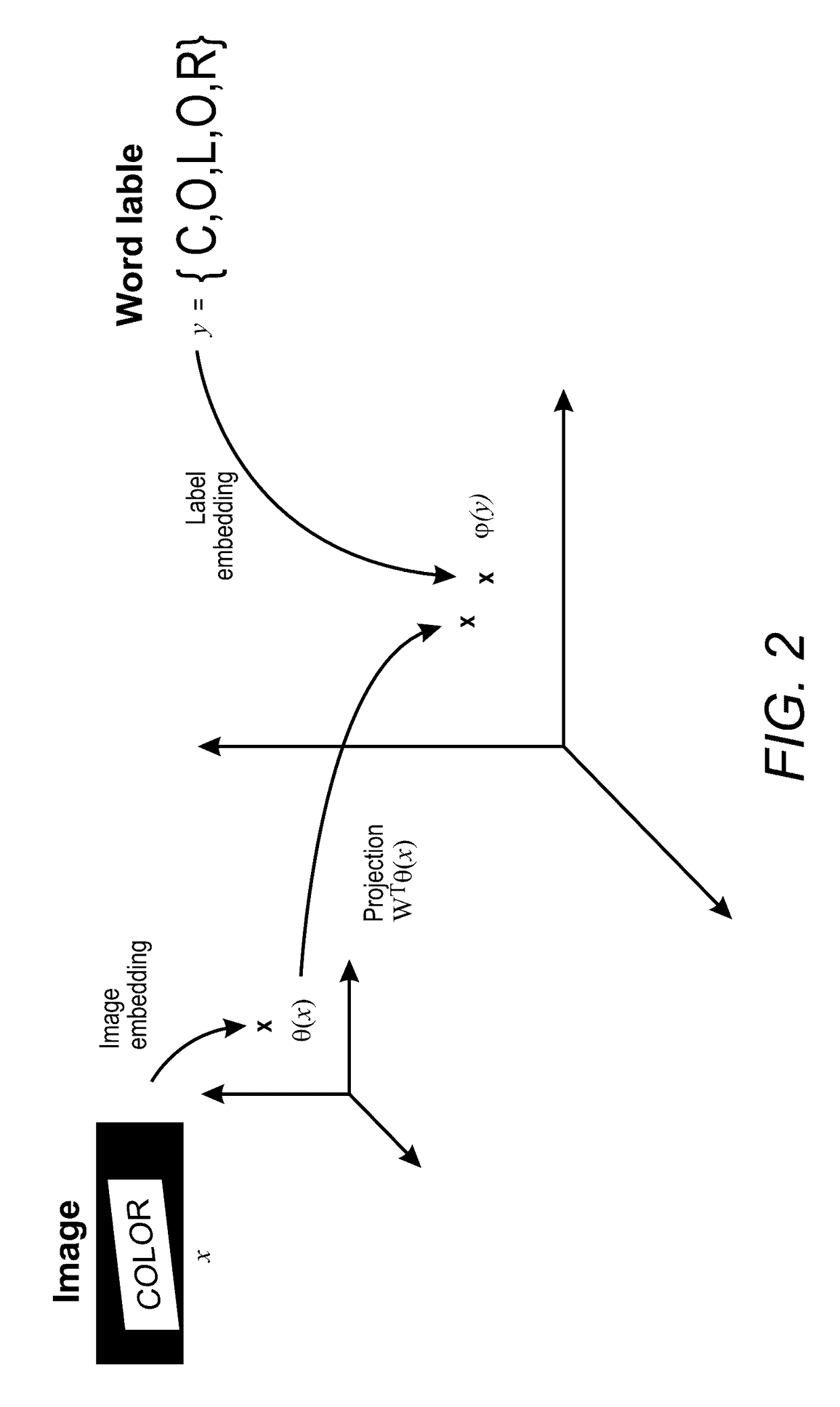Method and system to perform text-to-image queries with wildcards
a text-to-image and wildcard technology, applied in the field of text recognition in images, can solve the problems of inability to find a database, and inability to perform image search,
- Summary
- Abstract
- Description
- Claims
- Application Information
AI Technical Summary
Problems solved by technology
Method used
Image
Examples
Embodiment Construction
[0040]Aspects of the exemplary embodiment relate to a system and method for recognizing text in images which relies on a representation of a sequence of characters, such as a license plate number. This representation is referred to herein as a Spatial Pyramid Bag-Of-Characters (SPBOC) in which the characters are drawn from a predefined vocabulary (letters of the alphabet and numbers in the case of license plate numbers). The representation is derived from segmenting a character string into progressively smaller segments, in a pyramidal fashion, each segment being associated with a respective sub-representation which is a function of the characters in the respective segment. The sub-representations are aggregated to form a representation of the sequence as a whole.
[0041]In addition, this disclosure provides a method and system to perform text-to-image queries where wildcards may or may not appear in the textual query. Wildcards may be handled only at testing time, or at both training...
PUM
 Login to View More
Login to View More Abstract
Description
Claims
Application Information
 Login to View More
Login to View More - R&D
- Intellectual Property
- Life Sciences
- Materials
- Tech Scout
- Unparalleled Data Quality
- Higher Quality Content
- 60% Fewer Hallucinations
Browse by: Latest US Patents, China's latest patents, Technical Efficacy Thesaurus, Application Domain, Technology Topic, Popular Technical Reports.
© 2025 PatSnap. All rights reserved.Legal|Privacy policy|Modern Slavery Act Transparency Statement|Sitemap|About US| Contact US: help@patsnap.com



